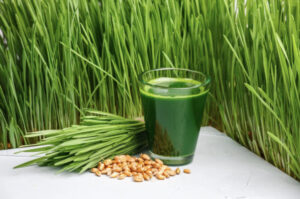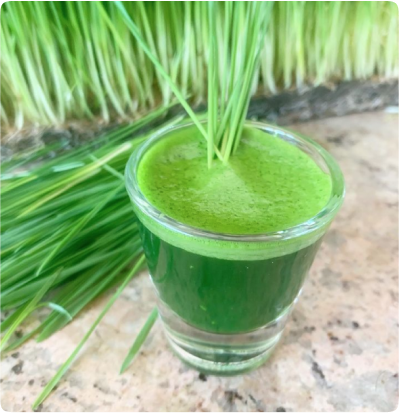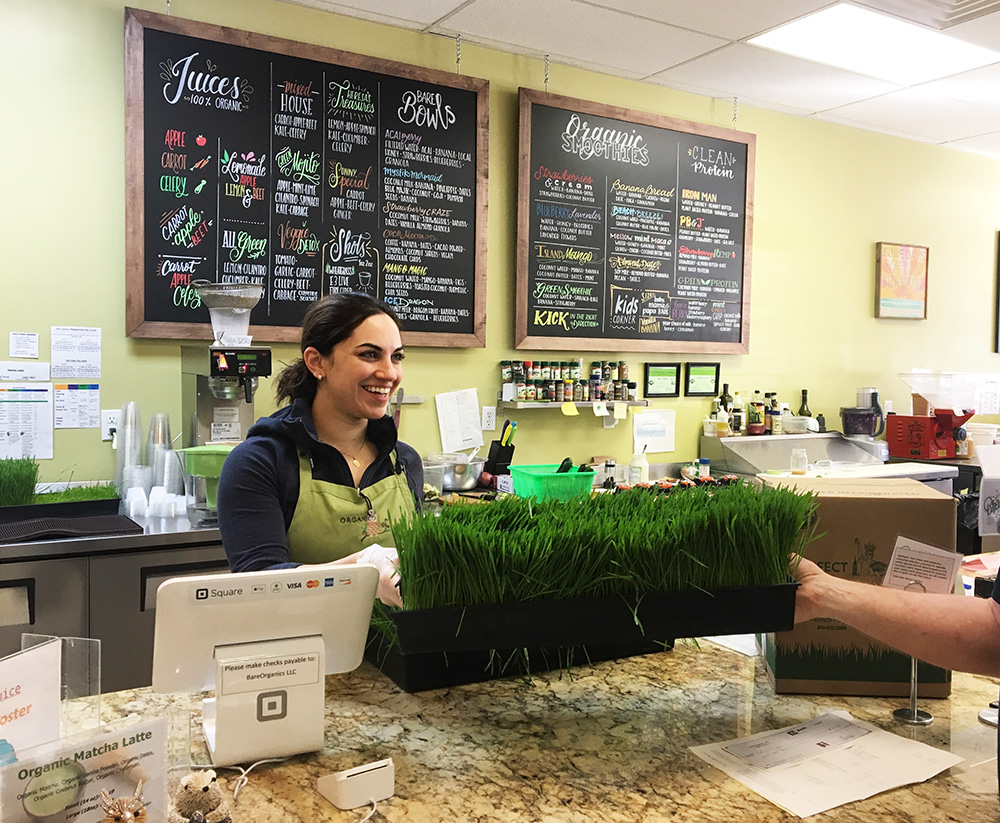
Wheatgrass and Ulcerative Colitis
Can wheatgrass help with Ulcerative Colitis? Yes! Ulcerative colitis, a prevalent form of inflammatory bowel disease, presents painful ulcers and inflammation in

You know when you learn something so fascinating that you can’t not share it? That’s exactly how I feel about enzymes.
I’ve always known food plays a role in how we feel, but I recently came across something that completely shifted my perspective. It turns out, it’s not just about what we eat—it’s about how our body breaks it down and uses it. And the key players in that process? Enzymes.
What I’ve learned about enzymes and living foods like wheatgrass and microgreens has been a game-changer. If you’re someone who wants to feel more energized, digest food more easily, and maybe even help your body heal itself more efficiently—this is something you need to hear.
Enzymes are catalysts—they speed up chemical reactions in the body. Every single process, from digesting your food to cellular repair, depends on them.
But here’s the part that really got me: Our bodies naturally produce fewer enzymes as we age.
That means digestion slows down, recovery takes longer, and energy levels start to dip. It’s one of the reasons why, as we get older, we start feeling that “I just don’t bounce back like I used to” kind of vibe.
I started wondering—can we actually do anything about this? And that’s when I discovered living foods.
I’ve heard the term “living foods” before, but I never really got what it meant until now.
Living foods—like wheatgrass, microgreens, and sprouts—are raw, unprocessed, and packed with enzymes, vitamins, minerals, and antioxidants.
The coolest part? Even though the enzymes in these foods might not directly help you digest food in your stomach, they stimulate your body’s own enzyme production. It’s like giving your body a reminder to work more efficiently.
Here’s a breakdown of why they’re so special:
• Wheatgrass – Rich in chlorophyll, which helps oxygenate the blood and support detoxification.
• Microgreens – Contain 4–40 times more nutrients than fully grown vegetables. (Yes, forty times! )
• Sprouts – Loaded with enzymes and antioxidants, making them incredibly easy to digest.
These aren’t just regular “healthy foods.” They’re bioactive—which means they actually support your body’s natural processes in a way that most foods don’t.
I came across a story that completely changed how I think about food.
Victor Kulvinskas, an MIT consultant, found himself dealing with serious health issues. When conventional medicine wasn’t helping, he turned to wheatgrass and living foods—drinking 4 ounces of wheatgrass juice daily and building his diet around sprouts and microgreens.
His transformation was so dramatic that he spent the rest of his life studying why it worked. Remember, he was a brainiac from MIT, so if we was interested in something, he wanted to understand it fully. He went on to help Ann Wigmore at Hippocrates Health Institute, where thousands of people have used enzyme-rich diets to support their health. He also wrote the book “Survival in the 21st Century” a manifesto about wheatgrass, living foods, meditation and yoga to help us today, written in the 70’s.
I don’t know about you, but when I hear stories like this, I have to pay attention.
He’s still alive and well and we had him as a guest speaker on our speaker series!
Here’s what really fascinated me: foods like wheatgrass and microgreens don’t just give your body nutrients—they help your body function better.
They contain bioactive compounds that:
Whether or not the enzymes in food directly help digestion is still up for debate, but the fact that these foods enhance the body’s ability to do its job is undeniable.
If you’re curious about adding living foods to your routine but don’t know where to start, this is a delicious way to try It for your first time:
It’s a small shot, but wow, does it pack a punch. And if you don’t have a juicer, your local juice bar can probably make it for you!
Wheatgrass has amazing health benefits, one being that one shot of wheatgrass is equivalent nutritionally to having about 2.5 lb of green vegetables.
Learning about enzymes and living foods has completely changed the way I think about health.
Instead of focusing on more supplements or complicated protocols, it’s really about giving our bodies what they need to do what they’re designed to do.
And the best part? It’s so simple. A handful of sprouts. A wheatgrass shot. A little microgreens on your plate. And you can get it delivered or shipped directly to your home.
If you’ve never thought about food this way before, I encourage you to try it. See how your body feels.
Because honestly? This stuff is too good not to share.
Perfect Foods Team
Want to get started on your enzyme rich food journey? Get fresh greens here: 800wheatgrass.com
Want to hop on a call for a free 15 minute consult to learn more? Book here.

Can wheatgrass help with Ulcerative Colitis? Yes! Ulcerative colitis, a prevalent form of inflammatory bowel disease, presents painful ulcers and inflammation in

Webinar Replay: Key Take Away Make Frozen Wheatgrass Juice At Your Juice Bar Ask Us For Promo Material Now “Perfect Foods has

Time to clear out the doody in the booty!! Colonics are a method which introduces water into the rectum with a small
Hours:
Mon-Thu: 8am-3pm
Fri: 8am-2pm
Sat-Sun: Closed